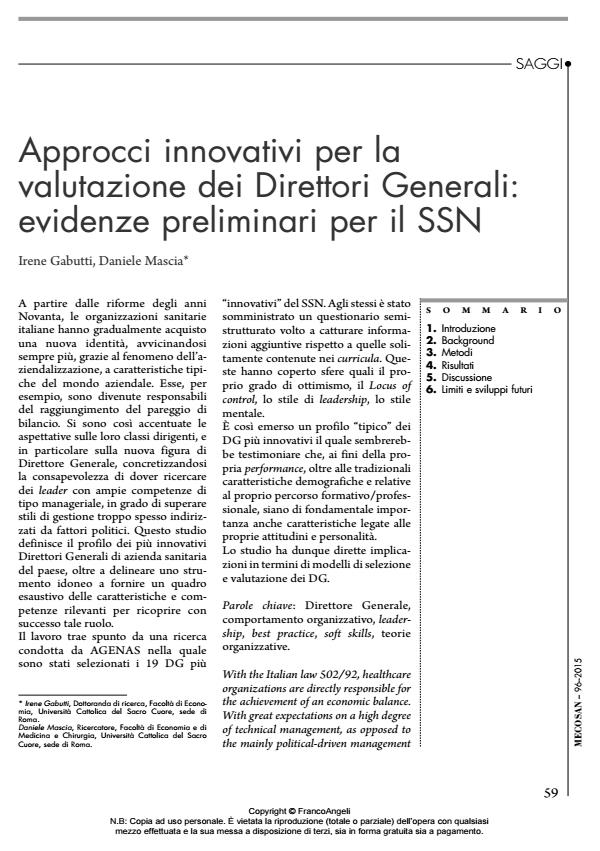Approcci innovativi per la valutazione dei Direttori Generali: evidenze preliminari per il SSN
Journal title MECOSAN
Author/s Irene Gabutti, Daniele Mascia
Publishing Year 2016 Issue 2015/96
Language Italian Pages 21 P. 59-79 File size 355 KB
DOI 10.3280/MESA2015-096004
DOI is like a bar code for intellectual property: to have more infomation
click here
Below, you can see the article first page
If you want to buy this article in PDF format, you can do it, following the instructions to buy download credits

FrancoAngeli is member of Publishers International Linking Association, Inc (PILA), a not-for-profit association which run the CrossRef service enabling links to and from online scholarly content.
With the Italian law 502/92, healthcare organizations are directly responsible for the achievement of an economic balance. With great expectations on a high degree of technical management, as opposed to the mainly political-driven management setof the 90s, it becomes crucial to identify "the right people" to drive such complex organizations. This study defines the typical profile of innovative CEOs in the healthcare sector. The work arises from a previous study conducted by AGENAS that identified the 19 Italian most innovative healthcare organizations from a managerial point of view. A semi-structured interview has been administered to the CEOs, in order to capture information, usually not present in CVs. Dimensions such as leadership styles, Locus of control, optimism and cognitive styles, although rarely studied and difficult to measure, do indeed seem to affect behaviors and performances in a drastic way. A number of common traits among the most innovative CEOs have been identified. The study aims to test that not only educational and professional experiences matter in order for CEOs to achieve a high performance, but that there exist a number of other features, connected to their personality traits and leadership styles, that play a just as important role. The study has important implications in reference to Regions’ responsibility in selecting CEOs in the healthcare sector.
Keywords: CEO, organizational behavior, leadership, best practice, soft skills, organizational theories
Irene Gabutti, Daniele Mascia, Approcci innovativi per la valutazione dei Direttori Generali: evidenze preliminari per il SSN in "MECOSAN" 96/2015, pp 59-79, DOI: 10.3280/MESA2015-096004